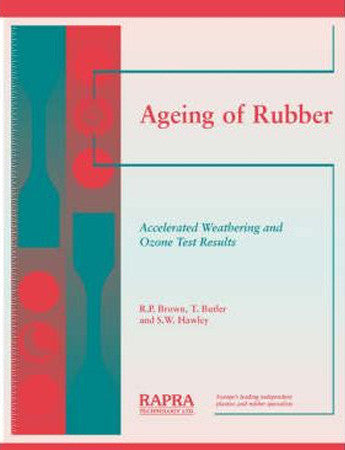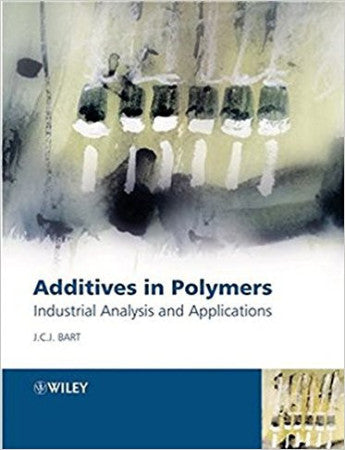Ageing of Rubber - Accelerated Weathering & Ozone Test Results
This report is an output from the Weathering of Elastomers and Sealants project, which forms part of the UK government's Department of Trade and Industry's Degradation of Materials in Aggressive Environments Program.
A long-term natural ageing program was started in 1958 when 19 rubber compounds were exposed at 3 locations. The final sets of test pieces were withdrawn in 1998 giving a total of 40 years of natural ageing.
The results of the physical tests carried out at intervals over the period were published in 2000 by Rapra in 'Natural Ageing of Rubber/Changes in Physical Properties over 40 Years'.
The 19 compounds were re-mixed in 1999-2000 in order that accelerated ageing tests could be carried out for direct comparison with the results from natural ageing. The formulations had been selected to
represent those used in a wide range of applications, including general purpose and 'good ageing' grades. Remarkably, most of these formulations are still representative of compounds being specified today. A
total of 20 new compounds were also mixed to represent polymers not available in 1958 and to reflect changes in compounding practice. Ten of these materials were formulations directly nominated by industry
covering materials of current interest to particular companies.
This report details the results of the artificial weathering and ozone exposure tests and makes comparisons with the results after natural ageing.
The following properties were selected for monitoring the artificial weathering exposures:
Tensile strength
Elongation at break
Stress at 100% elongation
Stress at 300% elongation
Microhardness
These properties correspond to properties monitored in the natural ageing program.
The results of all these tests are presented graphically in this report, allowing the rate of deterioration of properties and the influence of the environment to be clearly seen. Properties after the accelerated ageing
are also tabulated, with calculations of percentage change.
The information contained in this report will prove invaluable to anyone specifying or supplying rubber materials or components.
A long-term natural ageing program was started in 1958 when 19 rubber compounds were exposed at 3 locations. The final sets of test pieces were withdrawn in 1998 giving a total of 40 years of natural ageing.
The results of the physical tests carried out at intervals over the period were published in 2000 by Rapra in 'Natural Ageing of Rubber/Changes in Physical Properties over 40 Years'.
The 19 compounds were re-mixed in 1999-2000 in order that accelerated ageing tests could be carried out for direct comparison with the results from natural ageing. The formulations had been selected to
represent those used in a wide range of applications, including general purpose and 'good ageing' grades. Remarkably, most of these formulations are still representative of compounds being specified today. A
total of 20 new compounds were also mixed to represent polymers not available in 1958 and to reflect changes in compounding practice. Ten of these materials were formulations directly nominated by industry
covering materials of current interest to particular companies.
This report details the results of the artificial weathering and ozone exposure tests and makes comparisons with the results after natural ageing.
The following properties were selected for monitoring the artificial weathering exposures:
Tensile strength
Elongation at break
Stress at 100% elongation
Stress at 300% elongation
Microhardness
These properties correspond to properties monitored in the natural ageing program.
The results of all these tests are presented graphically in this report, allowing the rate of deterioration of properties and the influence of the environment to be clearly seen. Properties after the accelerated ageing
are also tabulated, with calculations of percentage change.
The information contained in this report will prove invaluable to anyone specifying or supplying rubber materials or components.
1. Introduction.
2. Materials
2.1 Original Materials
2.2 New Materials
3. Preparation of Test Pieces
4. Physical Tests
5. Exposure of Test Pieces
5.1 Weathering
5.2 Ozone Exposure
6. Weathering Results (Appendix 2)
6.1 Presentation
6.2 Uncertainty
6.3 Interpretation of results
7. Ozone Results (Appendix 3)
8. Discussion
8.1 Weathering
8.1.1 General
8.1.2 Hardness
8.1.3 Modulus
8.1.4 Tensile Strength
8.1.5 Elongation at Break
8.1.6 Effect of Temperature
8.2 Ozone
9. Conclusions
References
Appendix 1 - Compound Details
Appendix 2 - Weathering Results
Compound A - Natural Rubber - Standard
Compound B - Natural Rubber - Good Ageing
Compound C - Natural Rubber - Mineral Filler Loaded
Compound D - Natural Rubber - Mineral Filler (Heavy Loaded)
Compound E - Styrene Butadiene Rubber - General Purpose
Compound F - Styrene Butadiene Rubber - Good Ageing
Compound G - Styrene Butadiene Rubber - General Purpose
Compound H - Styrene Butadiene Rubber - Good Ageing
Compound J - Butyl Rubber - General Purpose
Compound K - Butyl Rubber - Good Ageing
Compound L - Polychloroprene - General Purpose
Compound M - Polychloroprene - Natural Ageing
Compound N - Polychloroprene - Heat Ageing
Compound P - Nitrite Rubber - General Purpose
Compound R - Polychloroprene - Good Ageing
Compound S - Miscellaneous - Acrylate Rubber
Compound T - Miscellaneous - Chlorosulphonated Polyethylene
Compound W - Miscellaneous - Polysulphide Rubber
Compound X - Miscellaneous - Silicone Rubber
New Compounds
Compound N1 - FVMQ
Compound N2 - HNBR
Compound N3 - Epoxidised Natural
Compound N4 - Chlorinated Polyethylene
Compound NS - Fluorocarbon
Compound N6 - Exxpro
Compound N7 - Epichlorohydrin
Compound N8 - EPDM
Compound N9 - EVA
Compound N10 - PU
Participant's Compounds
Compound P1
Compound P3
Compound P4
Compound P5
Compound P6
Compound P7
Compound PB
Compound P9
Compound P10
Appendix 3 - Ozone Results
2. Materials
2.1 Original Materials
2.2 New Materials
3. Preparation of Test Pieces
4. Physical Tests
5. Exposure of Test Pieces
5.1 Weathering
5.2 Ozone Exposure
6. Weathering Results (Appendix 2)
6.1 Presentation
6.2 Uncertainty
6.3 Interpretation of results
7. Ozone Results (Appendix 3)
8. Discussion
8.1 Weathering
8.1.1 General
8.1.2 Hardness
8.1.3 Modulus
8.1.4 Tensile Strength
8.1.5 Elongation at Break
8.1.6 Effect of Temperature
8.2 Ozone
9. Conclusions
References
Appendix 1 - Compound Details
Appendix 2 - Weathering Results
Compound A - Natural Rubber - Standard
Compound B - Natural Rubber - Good Ageing
Compound C - Natural Rubber - Mineral Filler Loaded
Compound D - Natural Rubber - Mineral Filler (Heavy Loaded)
Compound E - Styrene Butadiene Rubber - General Purpose
Compound F - Styrene Butadiene Rubber - Good Ageing
Compound G - Styrene Butadiene Rubber - General Purpose
Compound H - Styrene Butadiene Rubber - Good Ageing
Compound J - Butyl Rubber - General Purpose
Compound K - Butyl Rubber - Good Ageing
Compound L - Polychloroprene - General Purpose
Compound M - Polychloroprene - Natural Ageing
Compound N - Polychloroprene - Heat Ageing
Compound P - Nitrite Rubber - General Purpose
Compound R - Polychloroprene - Good Ageing
Compound S - Miscellaneous - Acrylate Rubber
Compound T - Miscellaneous - Chlorosulphonated Polyethylene
Compound W - Miscellaneous - Polysulphide Rubber
Compound X - Miscellaneous - Silicone Rubber
New Compounds
Compound N1 - FVMQ
Compound N2 - HNBR
Compound N3 - Epoxidised Natural
Compound N4 - Chlorinated Polyethylene
Compound NS - Fluorocarbon
Compound N6 - Exxpro
Compound N7 - Epichlorohydrin
Compound N8 - EPDM
Compound N9 - EVA
Compound N10 - PU
Participant's Compounds
Compound P1
Compound P3
Compound P4
Compound P5
Compound P6
Compound P7
Compound PB
Compound P9
Compound P10
Appendix 3 - Ozone Results




